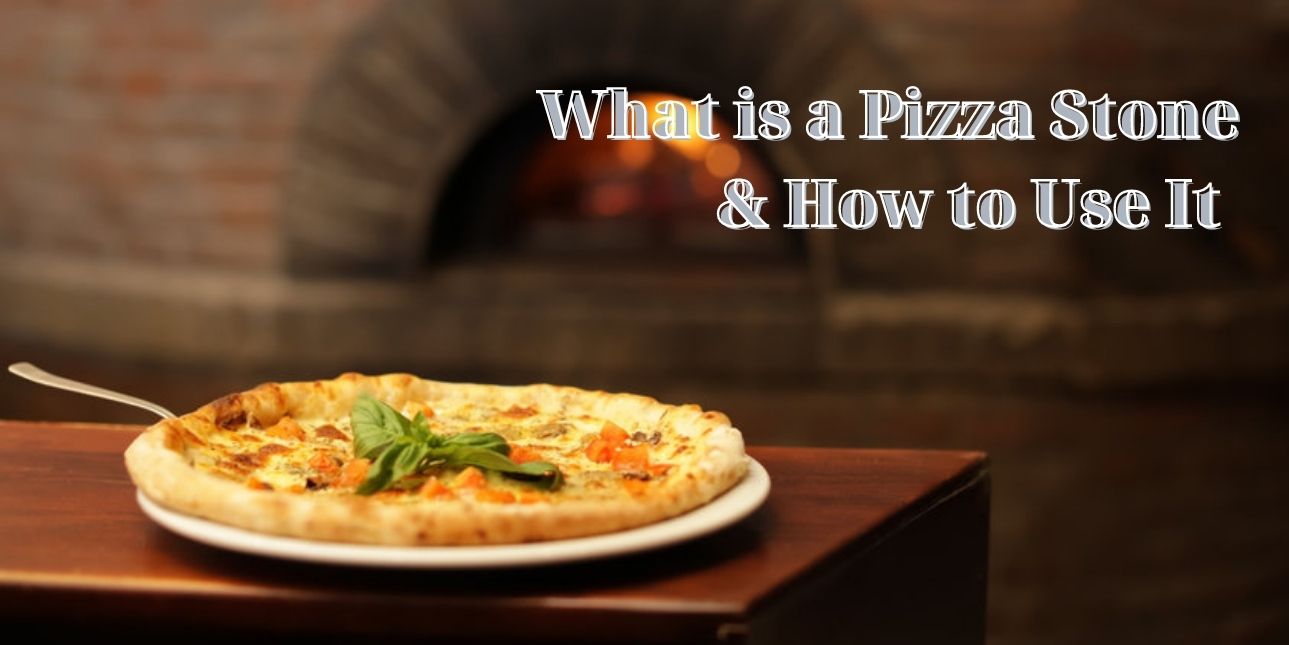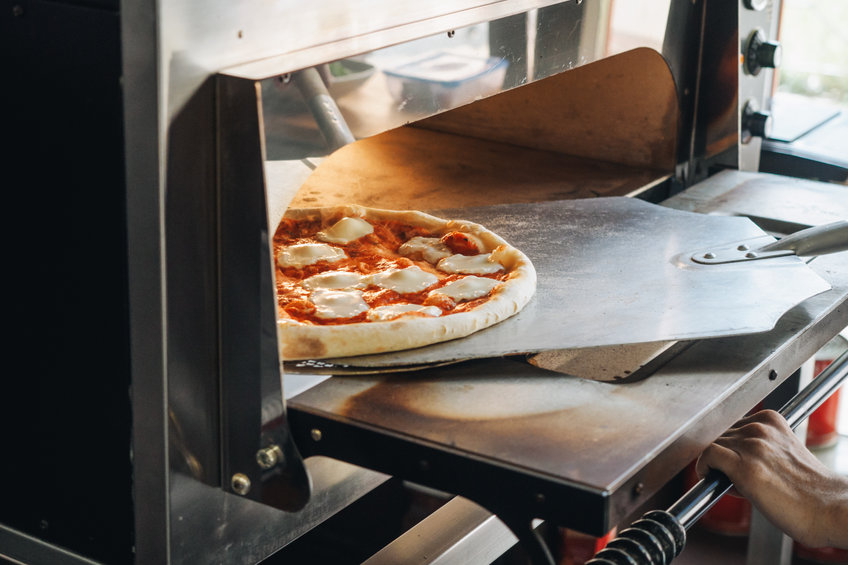 Pizza stones are great ways to cook pizza at your establishment, especially if you don’t have the convenience of operating a wood-fired oven. ‘What is a pizza stone?’ is a common question asked by many restaurateurs and pizzeria owners that intend on creating gourmet pizzas. Classic pizzas with a fully baked crust and cooked toppings with cheese can be prepared masterfully by a pizza stone using either an oven or a grill. The stone, though heavy, is porous and allows hot air to traverse through the structure. This helps you cook the pizza completely in a few minutes.
Pizza stones are great ways to cook pizza at your establishment, especially if you don’t have the convenience of operating a wood-fired oven. ‘What is a pizza stone?’ is a common question asked by many restaurateurs and pizzeria owners that intend on creating gourmet pizzas. Classic pizzas with a fully baked crust and cooked toppings with cheese can be prepared masterfully by a pizza stone using either an oven or a grill. The stone, though heavy, is porous and allows hot air to traverse through the structure. This helps you cook the pizza completely in a few minutes.
Pizza stones are also perfect for domestic and small-scale operations that do not have a large setup to work with. If you’re ready to make pizza that has a traditional feel, it’s time to begin deploying your pizza stone using your regular oven available in the kitchen. Read on as we address pizza stone directions and prevalent questions like ‘how to clean a pizza stone?’ and ‘what is a pizza stone made of?’
What is a Pizza Stone?
In case you were wondering what are pizza stones made of, they are cooking surfaces created with porous rock or ceramic,. This allows you to cook upon their flat surface. Their portability enables free movement without hassle, depending on the mode of cooking you prefer. You can place pizza bases along with toppings on a preheated pizza stone, which will proceed to cook due to the heat absorbed by the stone. The stone offers constant temperature regulation and a better crust when compared to a regular pizza tray or a sheet pan. Pizza stones are available in multiple sizes, as one that uses too much space will affect the functioning of a smaller oven. Ensure you take into consideration the dimensions of your oven before you invest in a pizza stone.
Why use a Pizza Stone?
This is a common question asked by several chefs that are new to the concept of pizza stones. Conventional convection ovens work on the principle of circulating hot air within the cooking space. Often, these ovens reach temperatures over 500 degrees, however, traditional wood-fired ovens can make the mercury soar to over double that reading. A significantdrawback with conventional ovens is that the temperature within can cool down the moment you open the door following preheating procedures. However, using pizza stones with ovens can help you retain precious heat, as the surface of the stone does not cool down as easily as the chamber. The hot surface allows the pizza to gain a crisp crust and a completely cooked interior, while the oven chamber handles the cheese melting and baking of the toppings. Regular heating or ‘recharging’ of the pizza stone is essential in achieving seamless functionality when dealing with a large order of pizzas.
Types of Pizza Stones
Here’s a list of commonly used pizza stones in kitchens and bakeries alike:
- Ceramic Pizza Stone: By far the most popular pizza stone, this cost-effective option comes in handy when creating delicious pizzas with any oven. The stone is quite porous and requires gradual heating so you prevent cracking and damage to the unit.
- Enamel Coated Pizza Stone: While other pizza stones end up getting discolored and stained over time due to the natural oils released during the cooking process, these stones will not. If you’re interested in pizza stones but have been wondering about how to clean a pizza stone, this variety is your best choice.
- Pizza Steel Top: Being some of the most efficient heat conductors, steel tops offer one of the best ways to prepare quality pizzas. They create crusts that will give you guaranteed five-star ratings, but require an amount of expertise to use.
- Cast Iron Pizza Stone: Though not technically a stone, deploying a cast iron pizza stone with an oven will give you excellent results. Though slower than steel when it comes to heating up, these options will retain heat for longer and ensure your pies are baked to perfection.
Pizza Stone Directions
Pizza stones can be used with both ovens and grills. Here are two simple guides with pizza stone directions to follow when baking or grilling a pizza:
- Pizza Stone Directions for Ovens
- Clean your stone using some cool water sourced from a commercial refrigerator, and a gentle scrubber before using it.
- Allow the stone to dry off completely before using it. If there’s any water in the stone while heating, it is bound to crack under the thermal stress created by the process.
- Place the stone in the oven and allow the stone to preheat along with it.
- Temperatures are ideally set to between 475 to 550 degrees Fahrenheit.
- Avoid dusting the stone with flour during preheating as the flour is bound to get burnt.
- After about 9 to 10 minutes of heating the stone, pull it out and dust it with flour or couscous so your pizza base doesn’t stick to the surface.
- Place the unbaked pizza on the stone and return the stone to the oven.
- Allow it to cook for around 10 minutes at up to 500 degrees Fahrenheit.
- Once done, remove the pizza from the stone using a pizza peel and allow the stone to cool down completely before cleaning.
- Pizza Stone Directions for Grills
- Cooking pizza over a grill mostly follows the same directions as those mentioned for the oven technique.
- Be sure to preheat the stone along with the grill, so the stone does not crack.
- Heat only one section of the grill, while leaving the other turned off.
- Place the uncooked pizza on the stone after dusting it with flour or couscous following the preheat procedures.
- Grills act quicker than ovens, so the cooking time is limited to between 5 and 7 minutes.
- A better way to judge would be by noticing when the crust begins turning brown, following which you can transfer the stone to the unheated portion.
- The indirect heat from the unheated portion will continue cooking the toppings and melting cheese without charring the base. Remove the baked pizza after 3 minutes on the cooler side.
How to Clean a Pizza Stone
While reaping benefits of a pizza stone using an oven is one part of the deal, cleaning and maintenance is an equally important aspect of it. Pizza stones can take up natural oils during cooking and become discolored. While this might seem unattractive, it adds a natural seasoning to the stone. However, maintaining a clean stone is essential to your business, here are a few steps on how to clean a pizza stone:
- Do not use detergents or soap for the cleaning process.
- These can be easily absorbed and will be leached out during the cooking process.
- Never submerge the stone in water.
- Sprinkling lukewarm water and scrubbing with a soft brush are the best methods of pizza stone cleaning.
- Avoid removing the oils on the surface as this removes natural seasoning.
- Allow the stone to dry off entirely before heating, and always heat the stone gradually. Sudden heating will cause it to crack.
Pizza stones can be a great addition to your pizza bay, helping you create thin crusts and delicious flavors. If you’re looking to do more with your pizzeria, ensure you take a look at our complete list of pizzeria equipment. You can also refer to this guide to implement ingenious ideas into your operation so no customer leaves dissatisfied.










